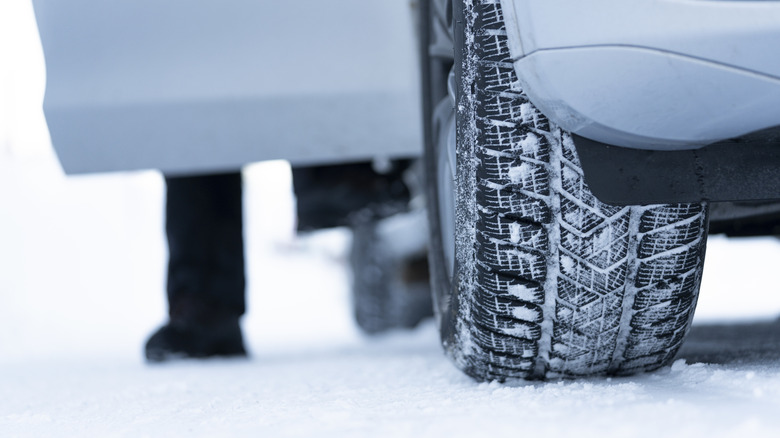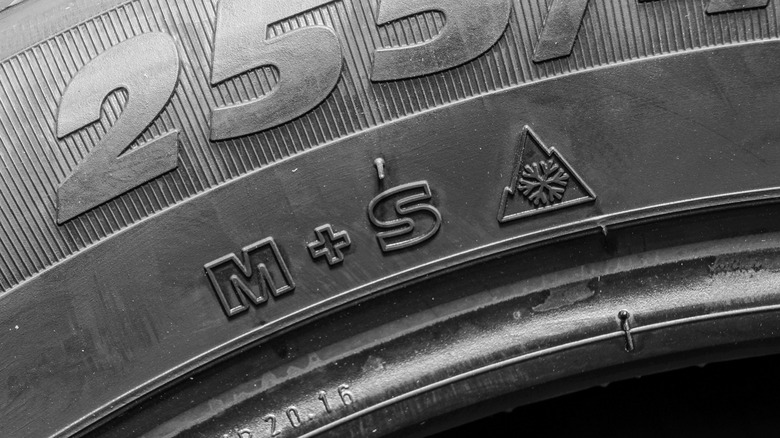Can You Use Winter Tires In Non-Winter Weather?
Winter has reached its cold, craggy fingers into many parts of the United States, and along with breaking out the parkas, beanies, and snow boots, you should give just as much thought to properly outfitting your whip's wheels. Winter (or snow) tires are made to work specifically for cold weather conditions encountered in most northern and high-altitude regions in the United States.
But can you use regular winter tires in non-winter weather? You can, but you probably shouldn't — unless, of course, you happen to live somewhere with snow on the ground all year round. Winter tires can work in non-winter conditions (unlike studded tires), but their rubber is specially designed to work in temperatures below 45 degrees Fahrenheit (7 Celsius). This special rubber is softer because it's made with more silica that, in turn, keeps the tires more flexible and thus gives them a better grip on uneven snow-packed winter roads.
If these same softer, grippier tires were used for extended periods in areas where the ambient temperature was typically above 45 degrees, the rubber would wear down much faster than a typical all-weather tire and, in all likelihood, would cause the vehicle to handle poorly, increased stopping distances, and in general provides less safety and overall decreased performance. Plus, faster wear means you'll have to replace them quicker, costing you considerably more money in the long run. After all, we're always looking for ways to make our tires last longer already, so why help out Mother Nature when we don't have to?
Warm weather is the enemy of winter tires
Additionally, winter tires have a more aggressive tread pattern with deeper treads that grab the winter gunk (snow, slush, and ice) and dramatically help with acceleration, braking, and maintaining traction. The deeper "floppier" tread is not conducive to providing any of those things when the temperature is warmer.
Snow tires aren't required in the U.S. yet, but many European countries and areas of Canada do mandate their use. In the past, they were designated with just an "M+S" (Mud and Snow) symbol and are sometimes labeled "all-weather" tires even though they're not. However, the Three Peak Mountain Snow Flake (3PMSF) symbol was agreed upon by the U.S. Tire Manufacturers Association (USTMA) and the Rubber Association of Canada (RAC) in 1999. It's a performance-based standard for tires that require a traction index of at least 110 (110% of the traction of a reference all-season tire) achieved while testing on packed snow. Today, all dedicated winter tires have this symbol.
Hyundai is working on a tire with retractable snow chains you don't even have to put on. Until then, Bridgestone tells us to use this analogy: you can wear tennis shoes on the beach and in the snow, but flip-flops are better in the sand, and snow boots work better in the snow. Think of winter tires as snow boots for your vehicle. In the end, using the wrong tires during the wrong season is just one of the terrible habits that slash the life of your tires.

